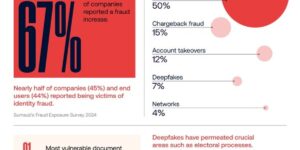The U.S. government on Wednesday released the final version of standards meant to help companies in nationally critical industries better defend against cyber attacks, and officials now face the challenge of getting the private sector to adopt the voluntary measures.
Criticized for being too vague and toothless, the so-called Cybersecurity Framework (see copy at end of article) turned a vast amount of industry input into guidelines designed for 16 different sectors whose disruption could be devastating to the country.
The release from the National Institute of Standards and Technology comes exactly one year after President Barack Obama issued an executive order directing the agency to compile voluntary minimum cybersecurity standards as one step to counter the lack of progress on cybersecurity law in Congress.
“While I believe today’s Framework marks a turning point, it’s clear that much more work needs to be done to enhance our cybersecurity,” Obama said in a statement.
“I again urge Congress to move forward on cybersecurity legislation that both protects our nation and our privacy and civil liberties,” he said. “Meanwhile, my Administration will continue to take action, under existing authorities, to protect our nation from this threat.”
The framework, drafted by the nonregulatory government agency in consultation with thousands of industry experts, offers broad benchmarks for companies to measure the effectiveness of their cyber defenses.
The Obama administration had faced intense pushback from the private sector on its earlier effort to mandate cyber defense standards, which contributed to stalled legislation. Now, the White House hopes companies voluntarily adopt the framework they have helped draft.
“This voluntary Framework is a great example of how the private sector and government can, and should, work together to meet this shared challenge,” Obama said, and a senior administration official called the framework the beginning of a “continuing common-sense conversation” about protecting the nation’s critical assets from cyber attacks.
“I think that the NIST standards will become over the next year or two, while we are waiting for legislation, the de facto best practices, just because they are accessible and current,” said Jonathan Fairtlough, managing director at Kroll Advisory Solutions’ cyber investigations practice.
Will They Adopt?
Cybersecurity experts warn that relentless efforts to hack into U.S. banks and financial institutions, the power grid and other critical infrastructure, paired with instances of disruptive attacks abroad, pose a national security threat.
The issue recently became a household topic after hackers stole about 40 million credit and debit card records and 70 million other records with personal customer data from the third-largest U.S. retailer, Target Corp.
Many experts have expressed alarm about the lack of awareness or reluctance among some companies’ leadership to spend more money on cyber defenses. The framework could force the issue into more executive suites, analysts say.
“At a minimum, it’s going to force this conversation up the food chain, out of the CEO office into the boardroom,” said Tom Kellermann, a former member of Obama’s Commission on Cyber Security and software company executive now with professional services firm Alvarez & Marsal.
But it is unclear whether the private sector, always concerned about liabilities attached to any standards, would widely adopt the voluntary framework.
The departments of Homeland Security, Commerce and Treasury are reviewing potential incentives for adoption, though some companies worry that incentives will come with strings attached and prompt more regulatory oversight or threat of lawsuits.
The White House has emphasized the voluntary nature of the framework and the need for companies to view cybersecurity as a business decision, part of its risk-management strategy.
“We may not ever know how widely the framework has been adopted, because obviously there’s not a requirement,” a second senior Obama administration official said on Wednesday. “There’s an enlightened sense here that we’re counting on.”
Department of Homeland Security on Wednesday also launched a program called Critical Infrastructure Cyber Community that would help companies reach out to the government for assistance in adopting the framework, and that participation may help gauge the popularity of the standards, the official said.
‘Gets Murky Fast’
But it is also unclear how effective the framework will prove in practice.
“At that high level, they got it right. … Further down, it gets murky really fast,” said Andrew Ginter, vice president of industrial security at Waterfall Security Solutions, whose clients include power plants and water-treatment facilities.
“The NIST framework never uses the word ‘firewall.’ It’s that abstract,” he said, referring to a common standard component of network security.
The framework offers sweeping categories such as “access control” or “data security” to evaluate how effectively a company identifies and protects network assets, and detects, responds to and recovers from breaches, on a one-to-four-tier scale for implementation.
The categories then break into subcategories, such as keeping inventories of used software platforms and applications, ensuring that top executives know roles and responsibilities, and setting information security policies.
The document also incorporates how the companies could do that while protecting privacy and civil liberties.
The framework builds on and references existing regulations, many of which were developed for specific sectors, such as energy and financial services.
“It can get really quite hard” studying and balancing various existing standards, said Dave Burg, who advises corporations on cybersecurity strategies at consultancy PricewaterhouseCoopers.
“This framework will provide a very nice baseline against which companies can test themselves.”
Insurer Reaction
[Property/casualty insurers welcomed the release of the Cybersecurity Framework by the NIST and the promise it may bring to development of a cybersecurity insurance market.
Angela Gleason, associate counsel for the American Insurance Association (AIA), said the voluntary framework will serve to help critical infrastructure owners and operators manage the cyber risks.
The White House and Department of Homeland Security are expected to host a number of workshops and seek public comment on a number of topics. “AIA looks forward to working with DHS as it begins to talk with insurance carriers and requests feedback from the public on how the government can help grow the cybersecurity insurance market,” she said.]
http://www.scribd.com/doc/206769234/NIST-Cybersecurity-Framework-021214




















 Deterioration Continues in U.S. Commercial Auto Insurance Segment After $5B Net Loss in 2023
Deterioration Continues in U.S. Commercial Auto Insurance Segment After $5B Net Loss in 2023  InsurTech Innovator Has High Hopes for Ascend
InsurTech Innovator Has High Hopes for Ascend  ‘Make America Healthy Again’: RFK Jr. Wins Over Fans by Stoking Food Toxin Fear
‘Make America Healthy Again’: RFK Jr. Wins Over Fans by Stoking Food Toxin Fear  More Than Half of All Employees in Finance, Insurance Work Remotely: Triple-I
More Than Half of All Employees in Finance, Insurance Work Remotely: Triple-I 










